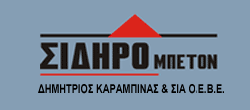|
|
||
 |
||
|
|
||
 |
||
|
|
||
|
|
||
|
|
|
|
|
|
|
|
|
|||
|
Corrosion of reinforcing steel bars (KTH 2008 § 10.1)
Reinforcement steel should be protected from the corrosion, before its placement in the concrete and during its life inside the concrete. Before final placement, steel should be exempted from obvious surface scales, alterations or accidental deformities and wounds, which accelerate corrosion. The speed of steel corrosion is increased, inside and outside of concrete, with:
In special cases, better protection of steel reinforcement from the corrosion in the concrete is required. In the case of intensely corrosive environment, or in the case that the life-time of the construction is longer than usual, additional measures can be applied accordingly as follows:
Use of coatings of suitable thickness Coating of concrete surface with thin protective layer from suitable organic or inorganic substances
Visual testing and estimation of corrosion (KTH 2008 § 4.5.9) If the surface of steel presents important alteration due to the general or located corrosion, the possibility of partial or total rejection of checked steel quantity is examined. For this reason, a special laboratory test for the determination of quantity of products of corrosion, is carried out. Specifically for the tests of corrosion, and since a possibility of rejection is examined, the samples would be received from the most corroded regions of bars. Losses of corrosion products during cutting and transport samples should be avoided. For this purpose, six samples of minimum length 0,25m will be taken. In each sample the mass of oxides is calculated as described below. If each value is less than 300gr/m² then the checked quantity is acceptable. If a value is higher than 300gr/m², there should be further examination for existence of pitting corrosion. In each sample, measurement of the depth of pitting holes in three corroded location is carried out. If the measured values in all locations is less than the critical one fixed in KTH 2008 § 10.3, then steel can be used, after previously being cleaned. If the bottom of pitting holes is higher than the critical value, even in one place, then the checked quantity is rejected. In any case, for the final acceptance of the checked quantity, the requirements for the nominal mass and the geometry of ribs should be satisfied. Trial of determination of products of erosion (KTH 2008 § 10.3) Each test-piece is weighted out with precision at least 0,01g. Afterwards it is immersed in hydrochloric acid solution (water solution 12gr HCl in 100ml of solution) and hexamethylenetetramine (solution 0,35g hexamethylenetetramine in 100ml of solution). The test-piece is weighted in intervals of time of 30min, up to constant weight. The difference of weight is calculated: Dw = initial weight - final weight The area of surface of test-piece is calculated and the difference of weight is expressed in g/m2. If the calculated value is less than 300g/m 2, steel can be used. Pitting corrosion could lead to reduction of ductility or to stress corrosion, having as a result brittle fracture. If the calculated value exceeds 300g/m 2, then existence of pitting corrosion should be investigated. The test for pitting corrosion is carried out with the microscopy method according to the DIN 50905-Part 3/87. The critical depth of pitting holes, h crit, is the depth above which important reduction of ductility with danger of brittle fracture happens. Currently, until the establishment of more reliable values , for the determination of critical depth of pitting holes, h crit, is proposed the application of following semi-empirical equation:
hcrit= If the depth of pitting holes is determined above critical depth, steel is rejected. If is determined depth is less than critical, steel can be used under the following conditions:
|
|
||